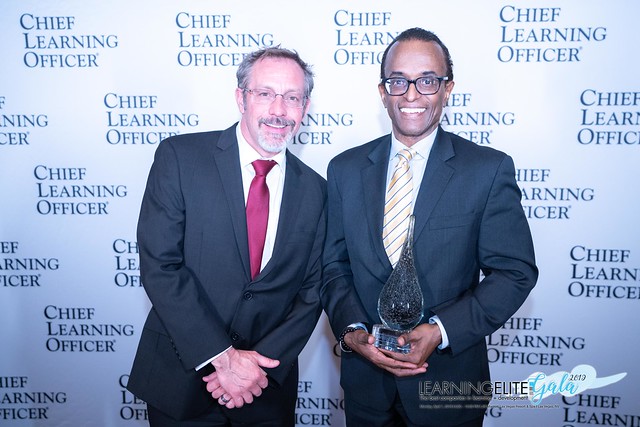The Health Plan Institute has been a steady fixture on the LearningElite Award winners list since 2015. Responsible for designing and delivering the learning and development programs that support the marketing, sales and business development functions of Kaiser Permanente’s Kaiser Foundation Health Plan, HPI is led by Executive Director David Livingston, who has been guiding the institute’s direction for the past six years.

Livingston attributes the success of HPI’s programs to the foundation on which they are set. The pillars of HPI’s programs — maintaining strategic alignment with business objectives, offering a wide variety of robust learning content, focusing on the importance of performance analysis, and developing strong assessment and evaluation tools — have been their formula for success. The elite quality of HPI’s programs all stem from these fundamental pillars, according to Livingston.
Human performance within the business has been a key indicator of program effectiveness. This has involved delving into performance issues to identify learning solutions. That’s where strong leadership matters for HPI. “By involving leadership at all levels and engaging with the business front-line and middle management, we can deliver the best solution,” Livingston said. Those solutions are what brings maximum value to Kaiser Permanente’s customers. The oversight of HPI’s leadership through learning, performance support, change management and communication has been key to providing those solutions.
“Our goal is to create multimodal approaches to learning,” Livingston said. This goal is reflected in the wide variety of technological tools that HPI incorporates into its overarching framework. Livingston identified that learners needed to be able to engage with “just in time” materials accessible on all devices. This need led to innovations in HPI’s program design and the use of technology to maximize the effectiveness of its programs.
One such technology was rolled out in 2017, when HPI introduced a learning portal called KP&Me. The portal targets specific business functions and roles to create a more streamlined, tailored experience. Users of KP&Me can also engage socially online with colleagues, managers and learning partners.
“Our most notable use of the portal is in our onboarding program,” Livingston said. Through the portal, new employees can access all of their onboarding materials. Progress through this platform is measured in milestones that illustrate a clear-cut learning path.
Another perk for new employees is the social function of KP&Me, which they can use to connect with each other through learner profiles and discussion groups.
The key to the organization’s learning strategy has been engagement, according to Livingston: “Engage employee hearts and minds beginning with onboarding.” Continuing from initial proficiency on the job to skilled mastery and advancement, Kaiser Permanente’s learning programs are intended to explicitly connect employee skills and performance to the organization’s mission and strategy. An objective woven into all programs is to reaffirm employees’ decision to build a career at Kaiser Permanente and to inspire everyone’s sense of purpose and desire to make an impact.
Research shows that email has an open rate of about 20 to 30 percent, whereas text messaging has an open rate of 98 percent. When Livingston learned about these statistics, it fueled HPI’s desire to update its engagement methods.
In September 2018, HPI piloted virtual coaching technology to connect with class participants in its Grow Coaching program. The tool utilizes a chatbot that sends two to three text messages per week to participants. What makes this tool unique is its ability to reach users more effectively and to offer microlearning opportunities. The coach’s personality is expressed through witty dialogue and a custom-designed Bitmoji character. It texts class participants “food for thought,” pop quizzes and microreinforcement videos, and it even reminds them of tasks they need to complete. The ultimate goal of this chatbot is to connect with learners in a way that doesn’t feel like training.
Tech innovations are only one part of the larger elite learning strategy at work at HPI, according to Livingston. While the formula for success remains the same, the organization has demonstrated its ability to adapt to the competitive pressures of an ever-shifting market. All members of staff, from tenured employees to new faces, participate in development activities.
Looking forward, Livingston anticipates further exploration of learning technology and tools. “We believe technology has huge potential to reinforce learning,” Livingston said.
SNAPSHOT:
Kaiser Permanente recently launched Brainshark to support video sales coaching, practice and feedback. Sales managers are asking their teams to practice everything from value proposition and handling customer objections to report and renewal delivery. Teams can practice anywhere and receive detailed manager feedback without a face-to-face meeting.
Company size: 180,000
Location: United States














